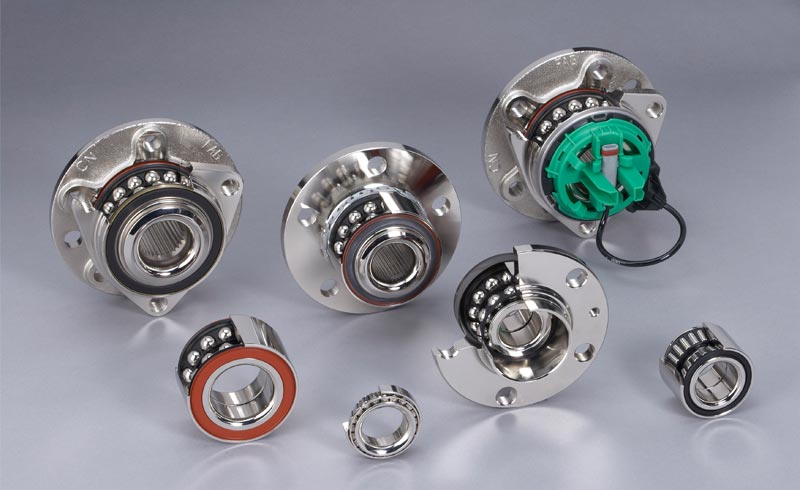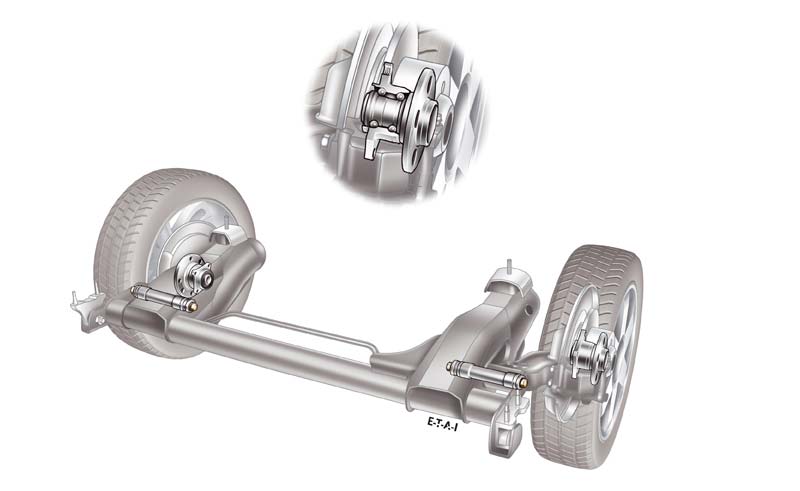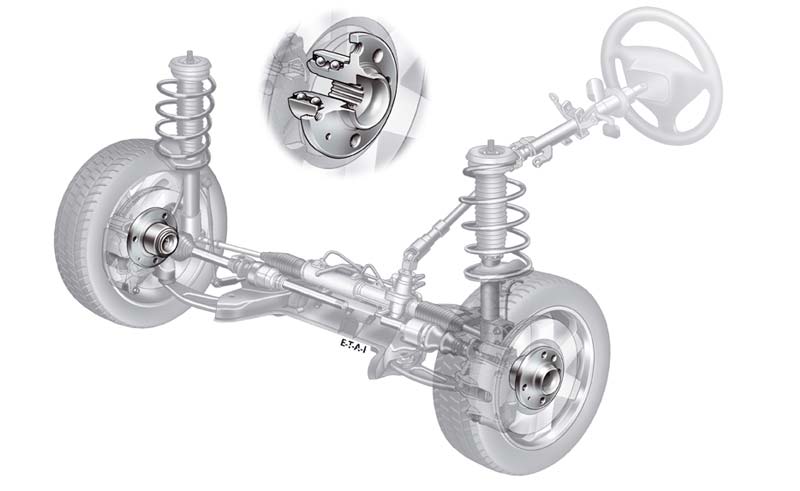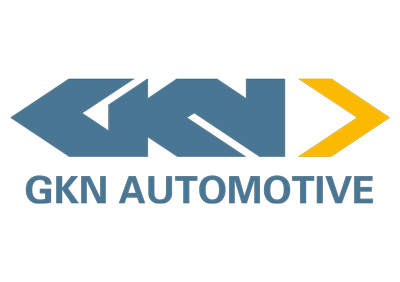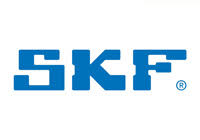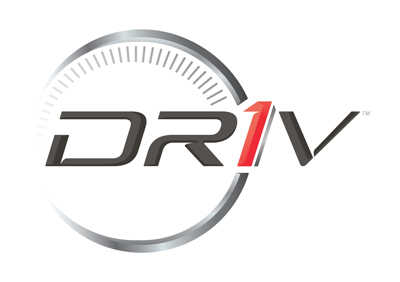Wheel bearings
Wheel bearings guide and support shafts and axles. They are part of the chassis, guide the wheels and absorb axial and radial forces. Radial forces are longitudinal forces produced as a result of rotation. They are applied to the wheel bearing at a right angle to the longitudinal axis.
Environmental protection
 Wheel bearings are designed to minimise the friction produced by the rotation of the wheels. As such they make an important contribution to fuel economy and the reduction of CO2 emissions. These are important present and future objectives for the automotive industry. Whilst the lubricant selected is a very important factor, the integration of other components associated with the wheel bearing also has an important role to play in modern bearing units. The integration of the ABS sensors, for example, and modern connections to the axle shaft reduce the weight at the axle, thereby contributing to fuel economy.
Wheel bearings are designed to minimise the friction produced by the rotation of the wheels. As such they make an important contribution to fuel economy and the reduction of CO2 emissions. These are important present and future objectives for the automotive industry. Whilst the lubricant selected is a very important factor, the integration of other components associated with the wheel bearing also has an important role to play in modern bearing units. The integration of the ABS sensors, for example, and modern connections to the axle shaft reduce the weight at the axle, thereby contributing to fuel economy.
Function
 Wheel bearings guide and support shafts and axles. They are part of the chassis, guide the wheels and absorb axial and radial forces. Radial forces are longitudinal forces produced as a result of rotation. They are applied to the wheel bearing at a right angle to the longitudinal axis. Axial forces, on the other hand, are forces that act on the wheel bearing in the direction of the longitudinal axis. They are produced during cornering, for example. The axial forces produced during cornering expose wheel bearings to particular stress.
Wheel bearings guide and support shafts and axles. They are part of the chassis, guide the wheels and absorb axial and radial forces. Radial forces are longitudinal forces produced as a result of rotation. They are applied to the wheel bearing at a right angle to the longitudinal axis. Axial forces, on the other hand, are forces that act on the wheel bearing in the direction of the longitudinal axis. They are produced during cornering, for example. The axial forces produced during cornering expose wheel bearings to particular stress.
Types of wheel bearing
In modern passenger cars, two types of wheel bearing are used in accordance with requirements: taper roller bearings and ball bearings. The versions of these bearings that are used vary according to application and load. Essentially, wheel bearings consist of
- an outer ring and an inner ring
- the rolling elements
- a ball cage enclosing the rolling elements.

 Depending on the design of the bearing, the rolling elements ball or roll-shaped. They roll back and forth on the raceways of the two rings.Their task is to transfer the force acting on the bearing from one bearing ring to the other.
Depending on the design of the bearing, the rolling elements ball or roll-shaped. They roll back and forth on the raceways of the two rings.Their task is to transfer the force acting on the bearing from one bearing ring to the other.
Lubrication
As the rotation of the wheel bearing produces high friction, the rolling elements must be lubricated. Lubricants such as lubricating grease or lubricating oil are used for this purpose. Without lubrication, the bearing cannot function. Most wheel bearings used in modern passenger cars are designed to be totally maintenance-free. This is because they are filled with grease which will provide sufficient lubrication for the rolling elements for the entire service life of the wheel bearing. Elaborately designed seals ensure that neither water nor dirt can get into the wheel bearing. Seals for modern wheel bearings often feature integrated magnetic pulse generators which generate the speed signal for the ABS system in the wheel speed sensor.
Safety
Wheel bearings are components that are relevant to safety. They are responsible for stable driving behaviour and, depending on design, supply the wheel speed information for the ABS system. In the event of a fault, therefore, the ABS can also be taken out of service. If emergency braking was required, this would increase stopping distances and impair the steerability of the vehicle.
Sign of faulty wheel bearings
Loud metallic rolling noises are a sign of faulty wheel bearings. To avoid major damage to or the complete failure of the wheel bearing, the vehicle should be taken to a garage immediately. In the event of a faulty wheel bearing, it is always advisable to check the other axle bearing also, as it is likely that both wheel bearings will have been exposed to approximately the same load and have the same service life.
Depreciation
Wheel bearings are designed and dimensioned to withstand high loads and high levels of environmental stress. Strong radial (e.g. caused by potholes) and axial (e.g. caused by bumping into kerbs) impacts are the biggest enemies of wheel bearings. Extreme cornering also reduces the service life of wheel bearings due to the occurrence of high axial lateral forces. So that damage can be detected at an early stage, the garage will check wheel bearings during regular service and maintenance work.

